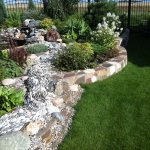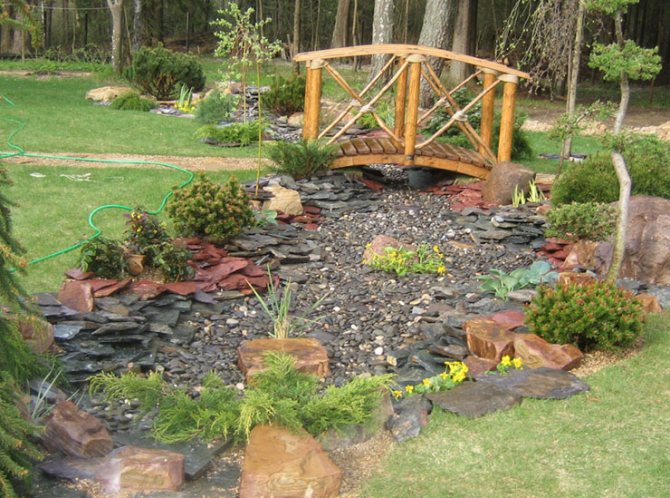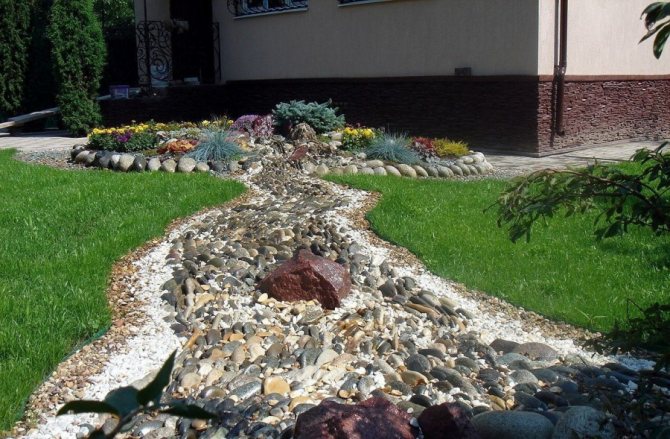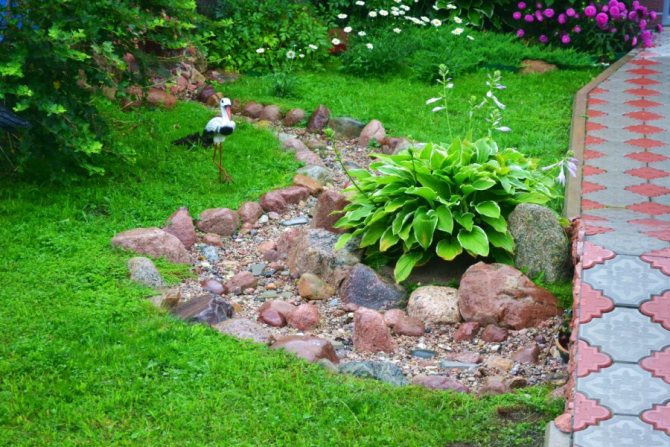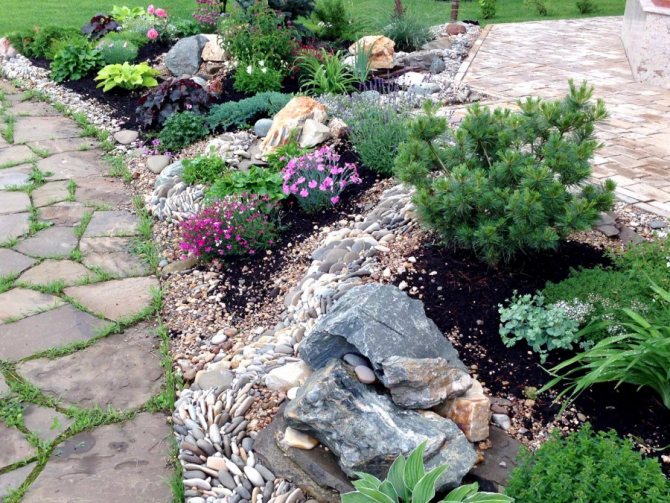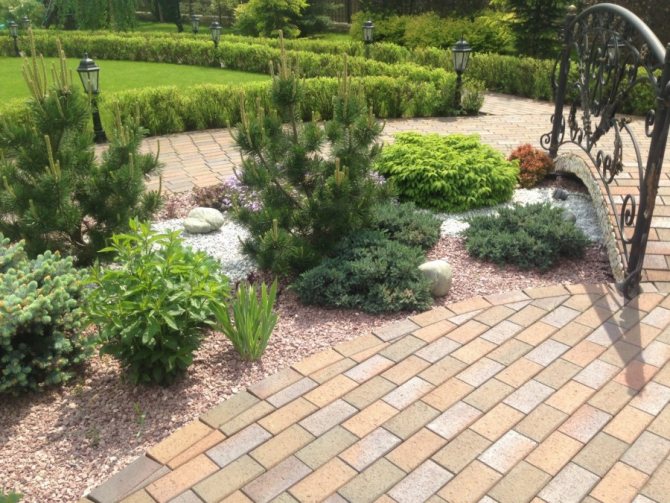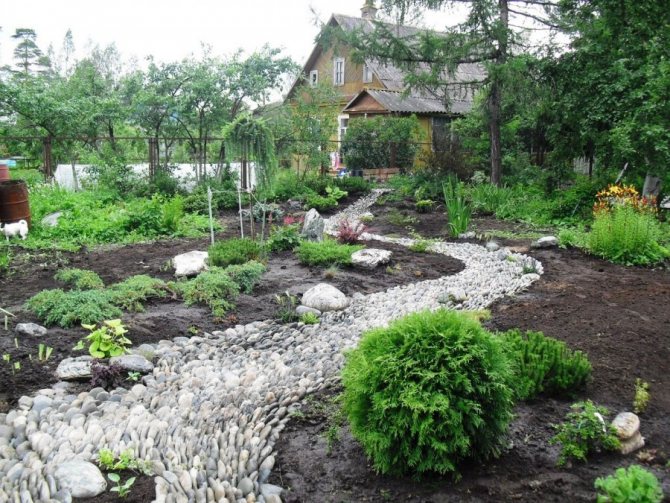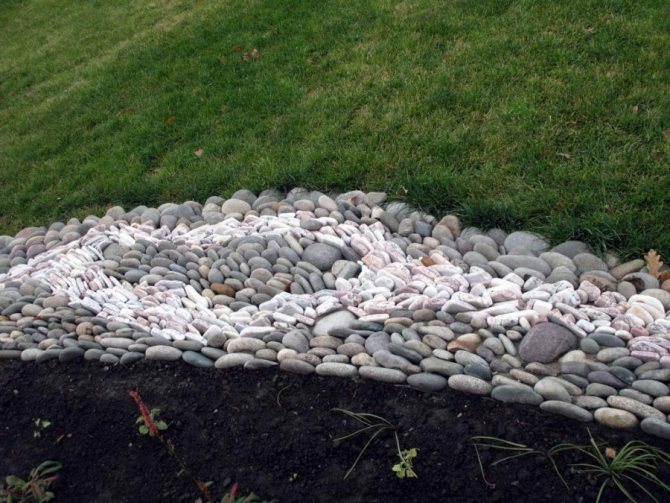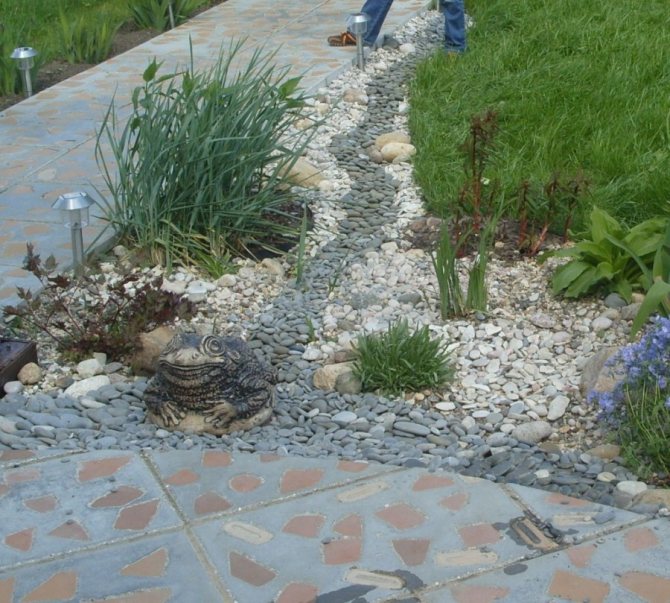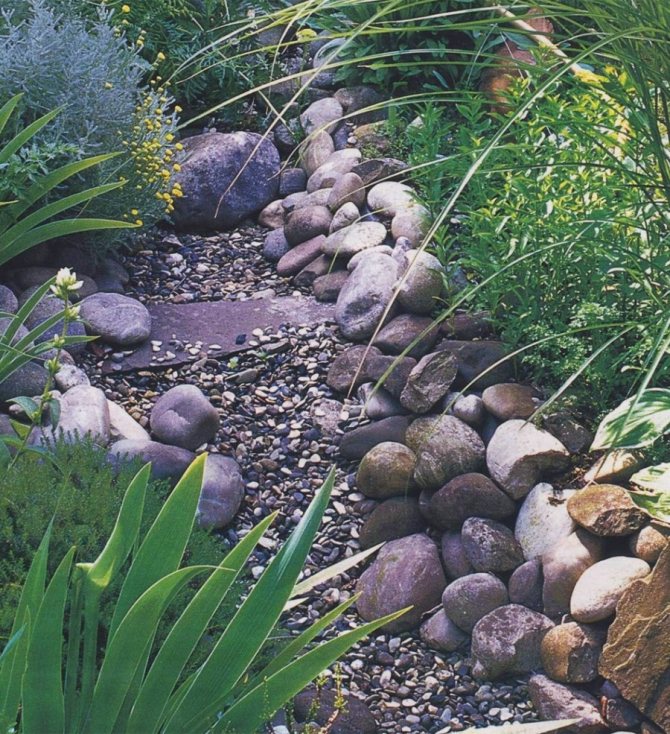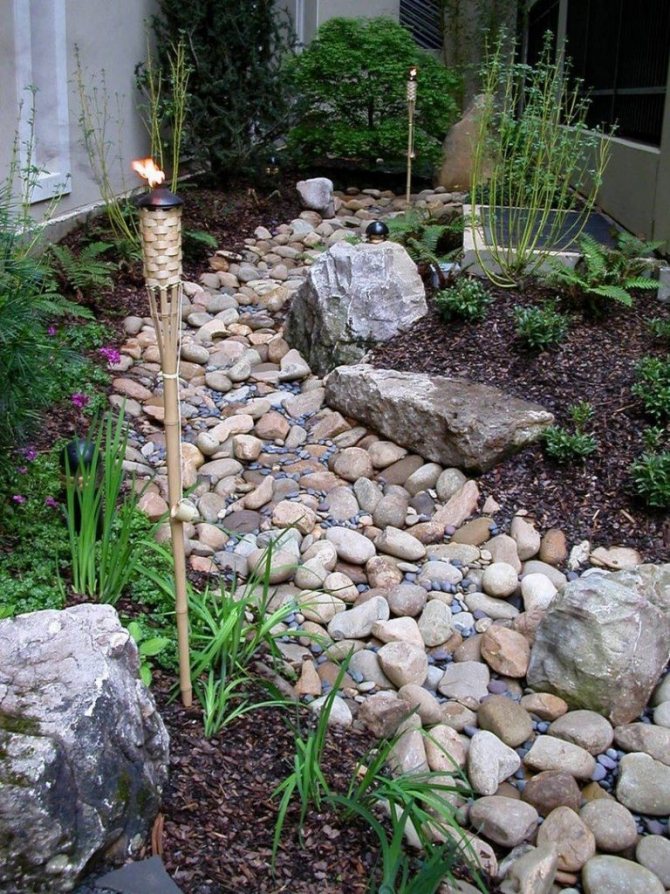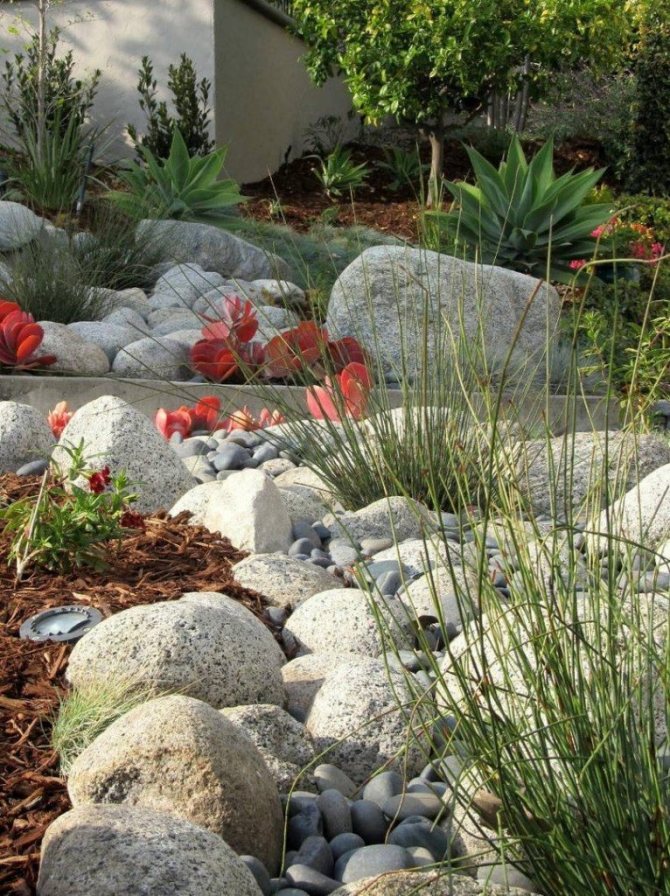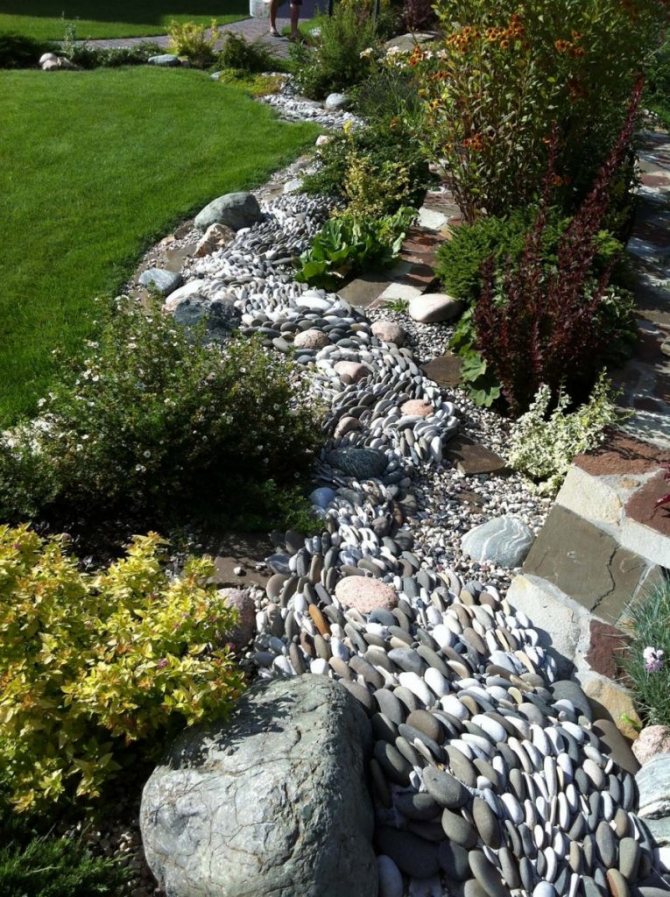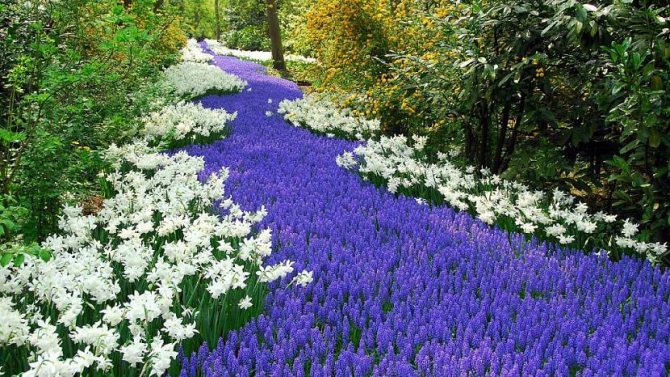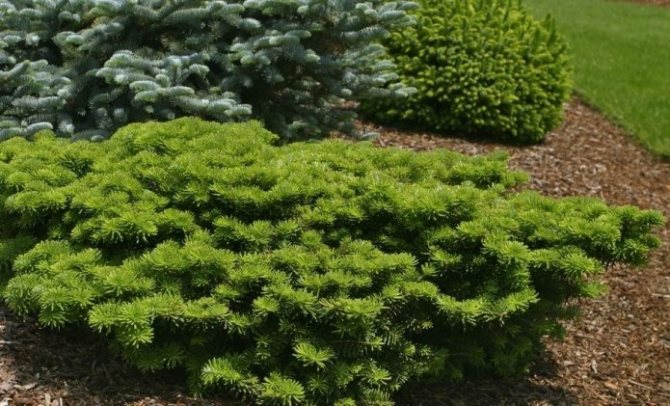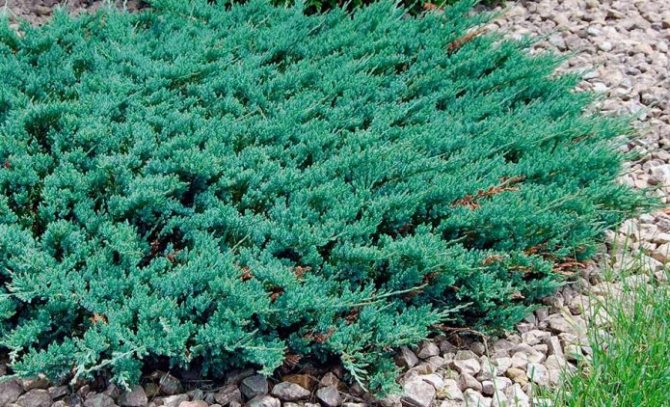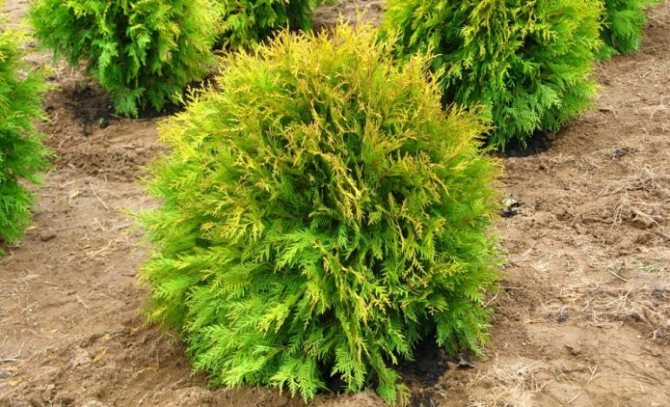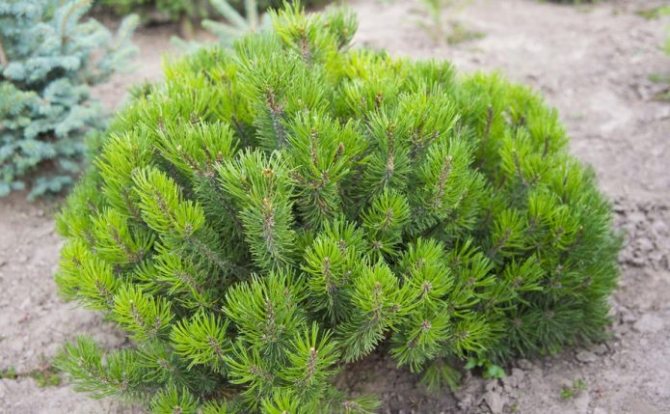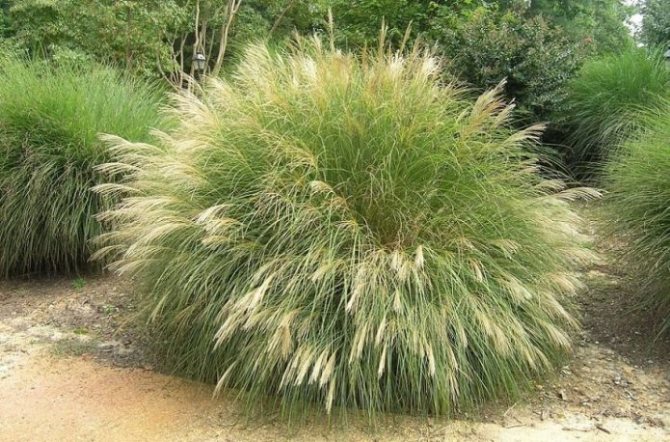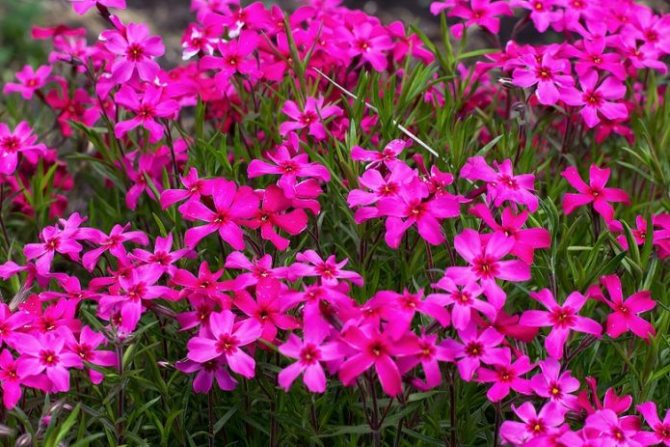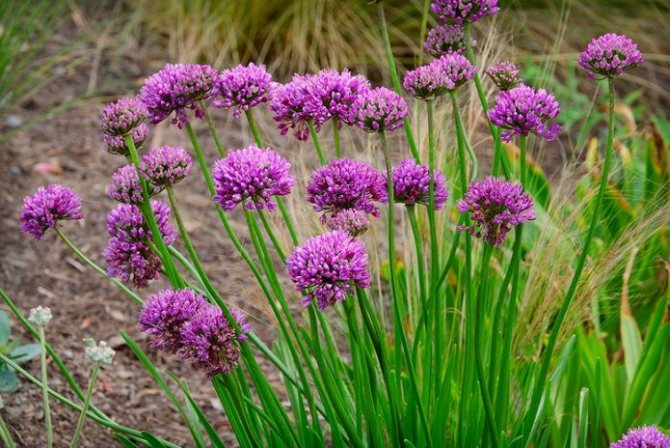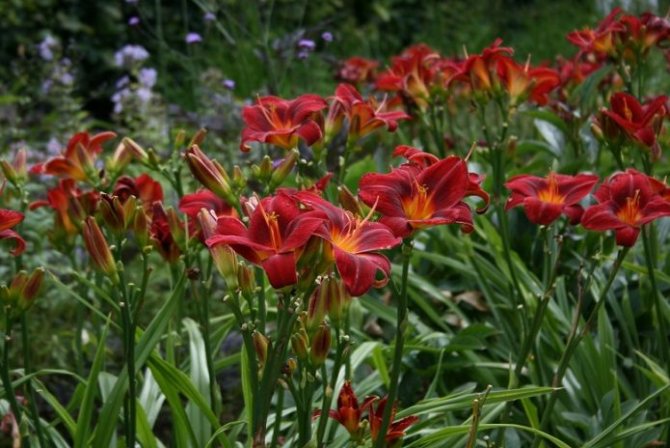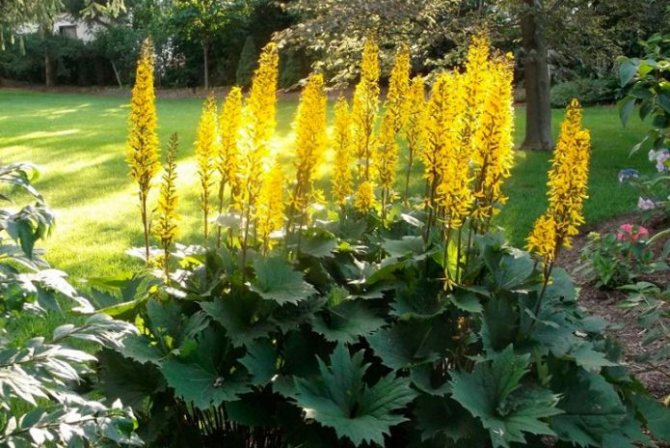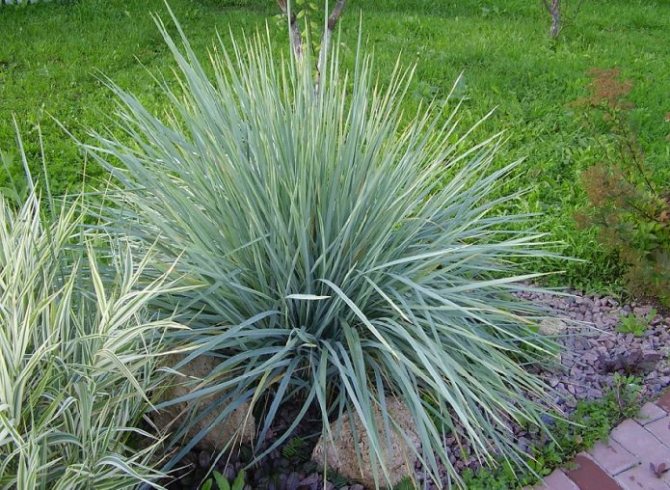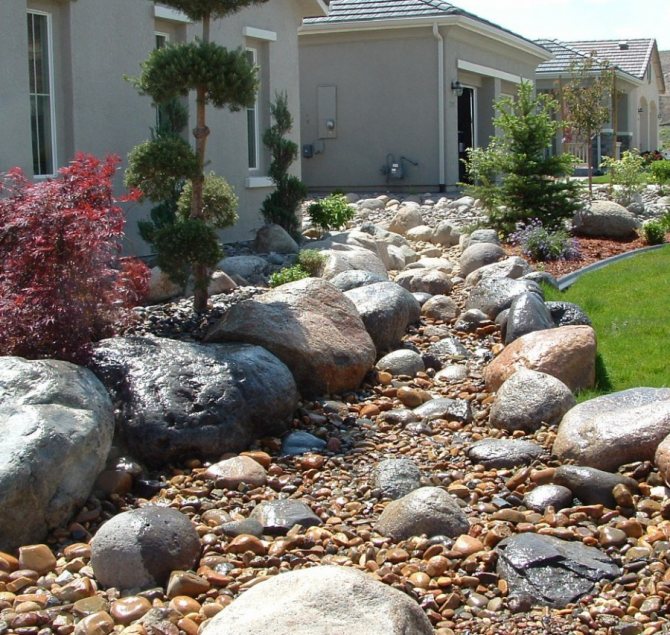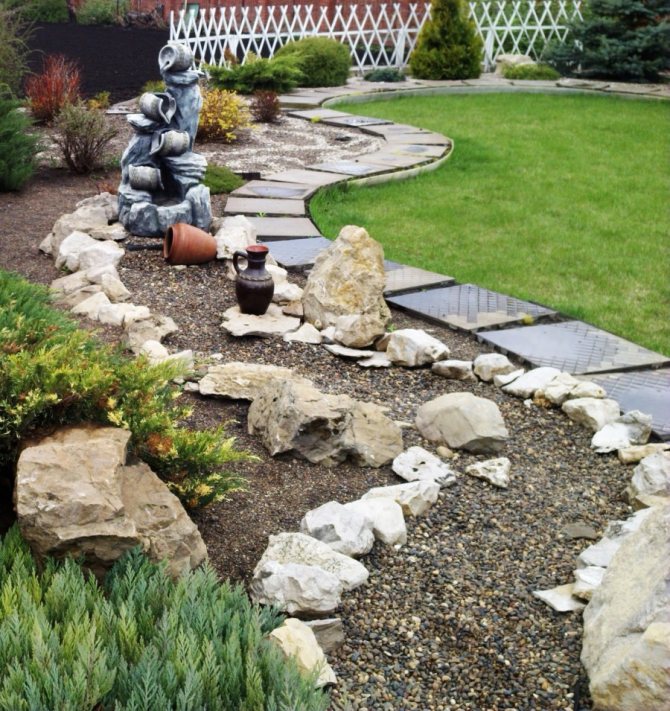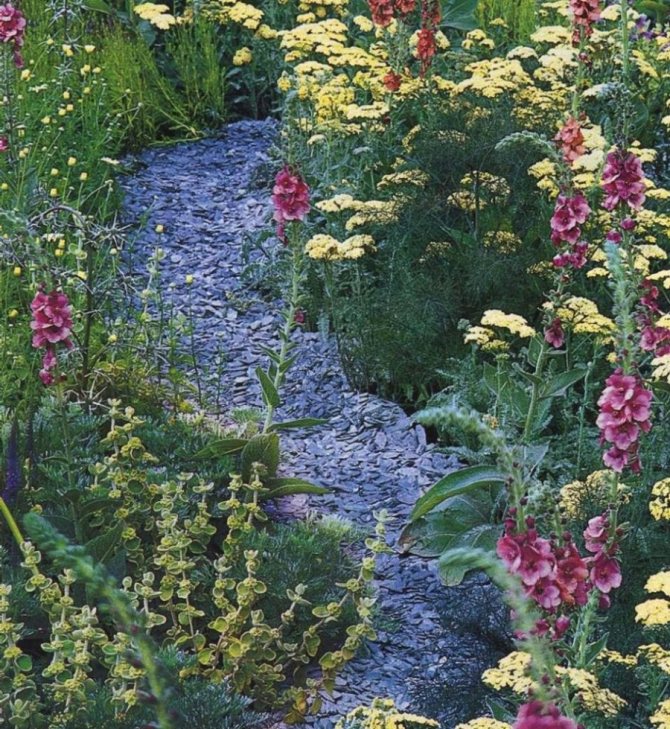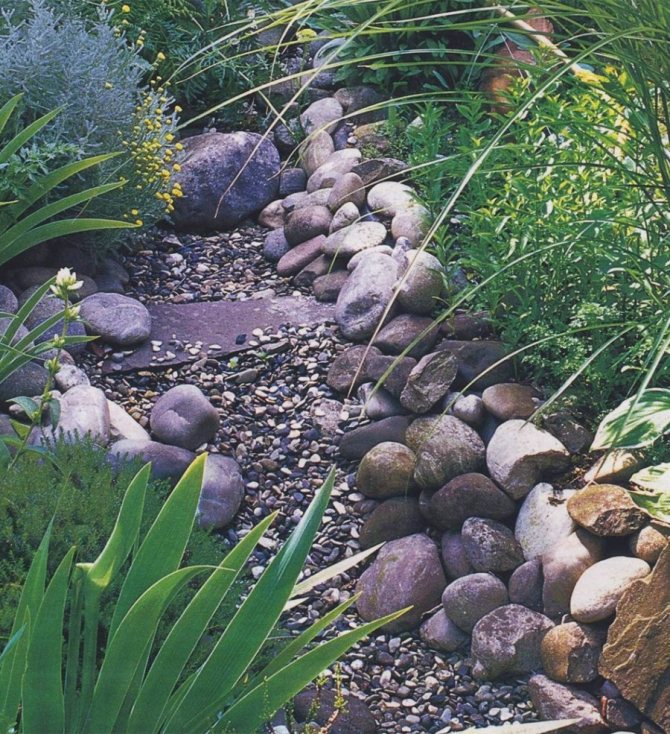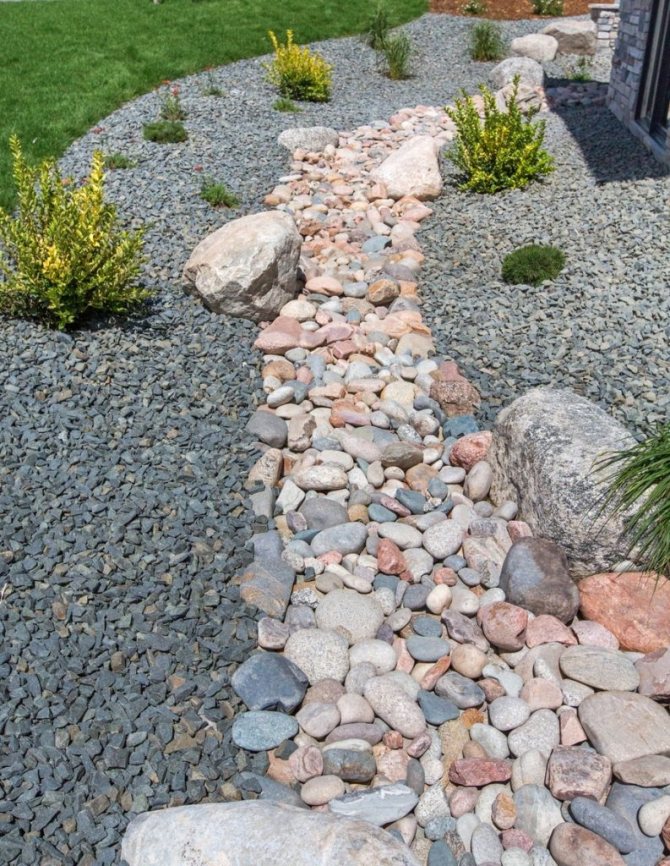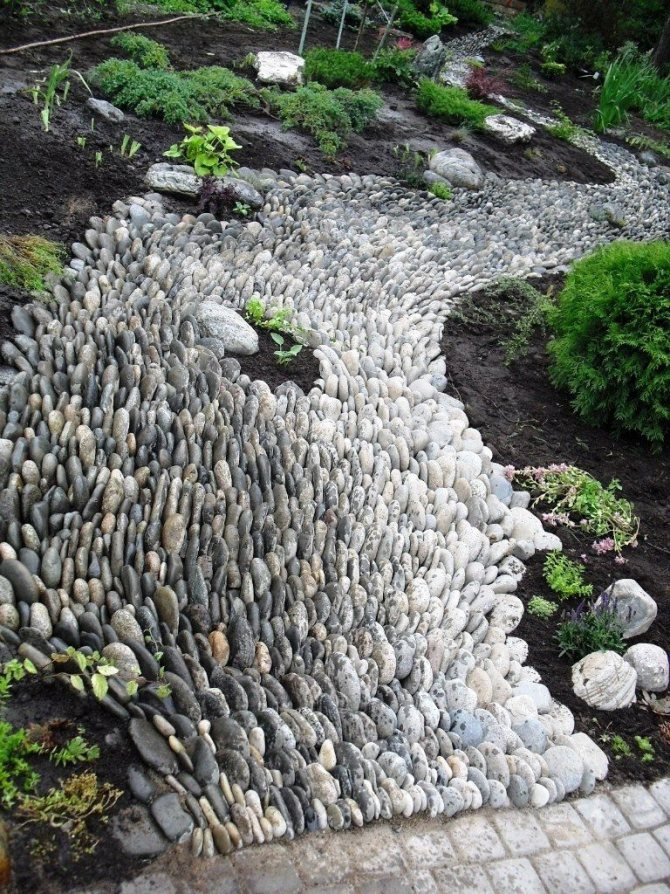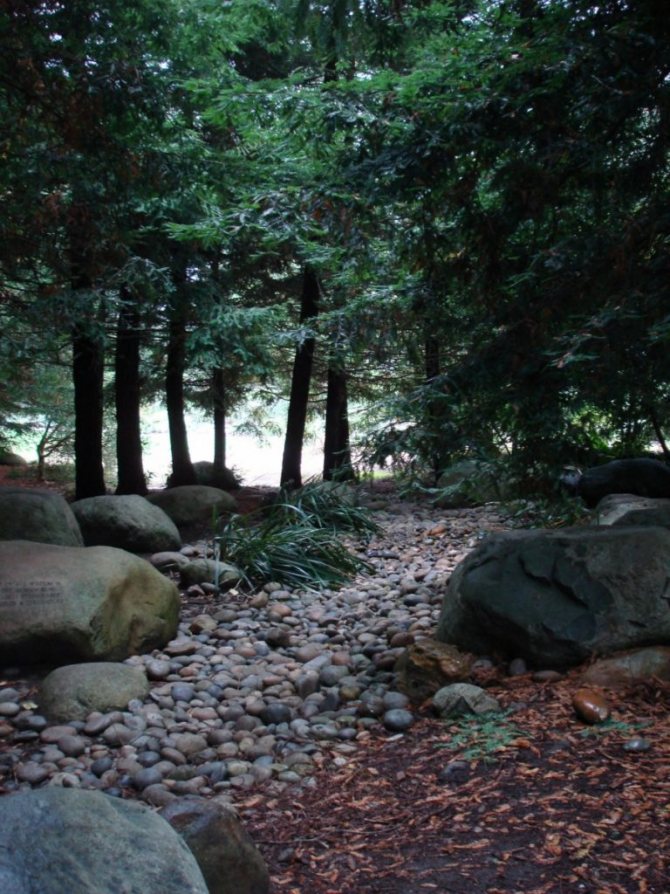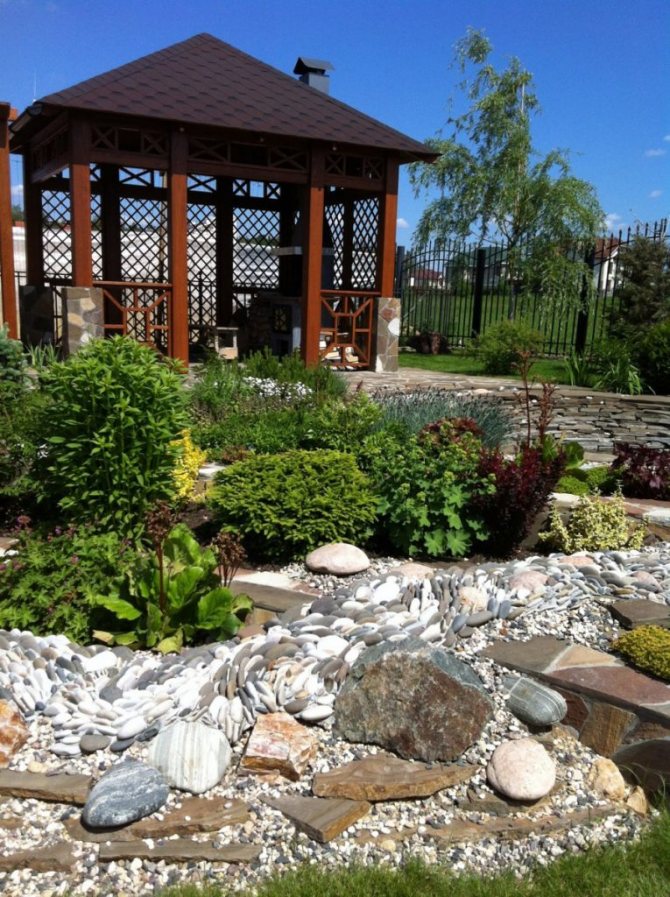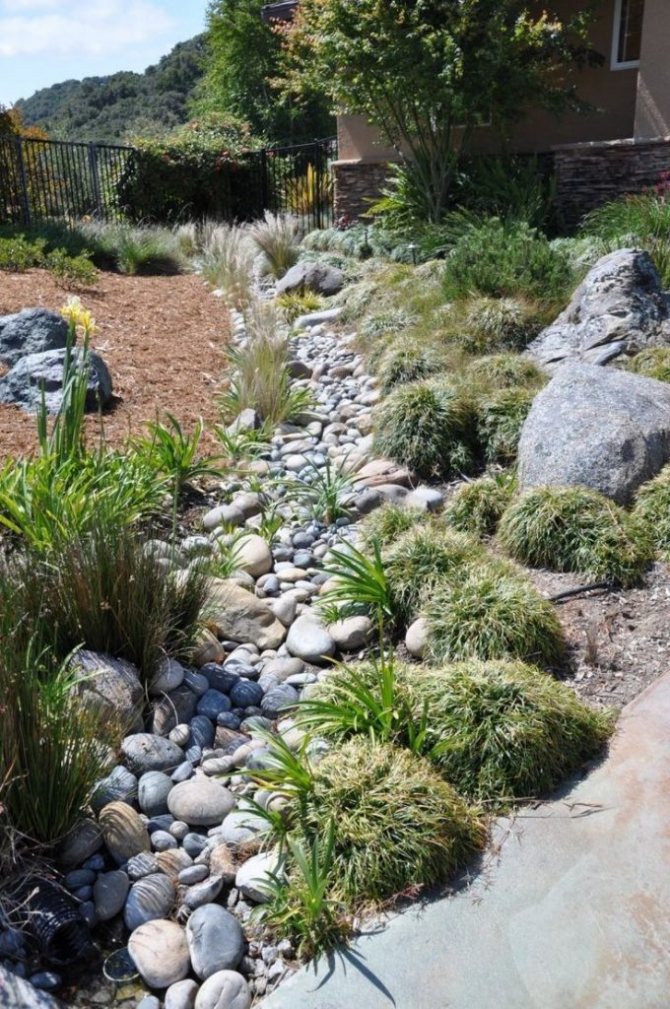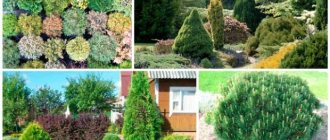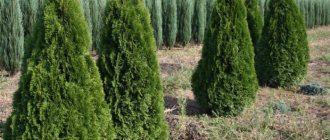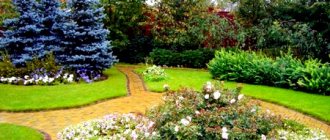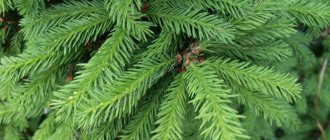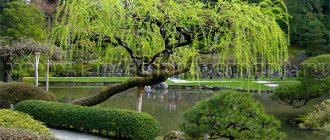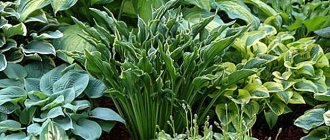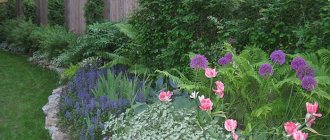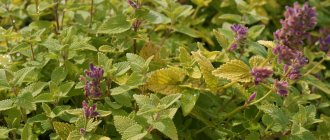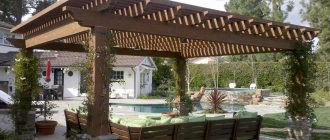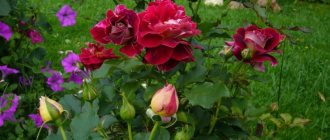A beautiful dry stream is considered a bright and original detail in landscape design. Absolutely every amateur gardener can make it on their own. To create this decor, you will need dry sawdust or small pebbles.
This decor element will become a real decoration on your personal plot. It helps to correct minor relief defects, and also visually increases the area of the territory several times.
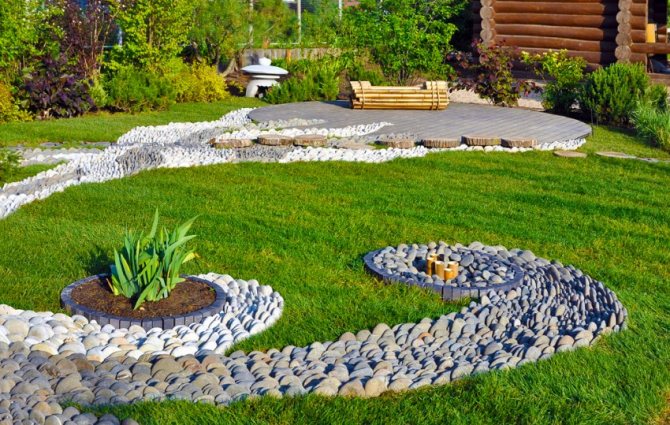
Our material presents ideas on how to make a dry stream at home.
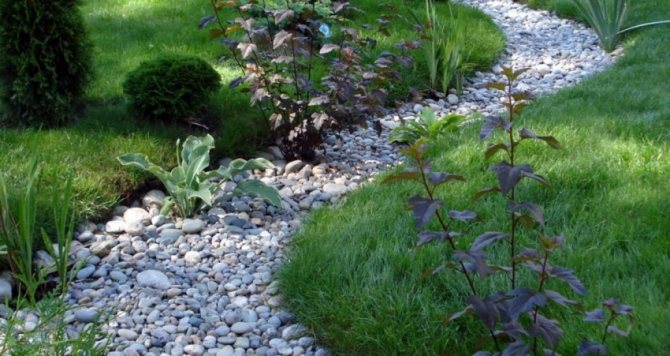

Creation of a dry stream
The technology of creating a dry stream is a very demanding process. The very first and most important thing is to decide on the place where the stream itself will be located, what its shapes and bends will be. After choosing a place, it is necessary to designate the beginning (source) and end (mouth) of the brook, or it can ring the entire section. Depending on the size of the territory, you should pay attention to its width. As a rule, narrower and more winding streams increase the territory, and wider forms look great in large areas.
After the place and size have been determined, a trench is dug. Most often, the ratio of width and depth is 2 to 1, and the walls do not exceed 400. This place is carefully weeded and tamped, then covered with dense covering material, in order to avoid weed germination and soil leaching.
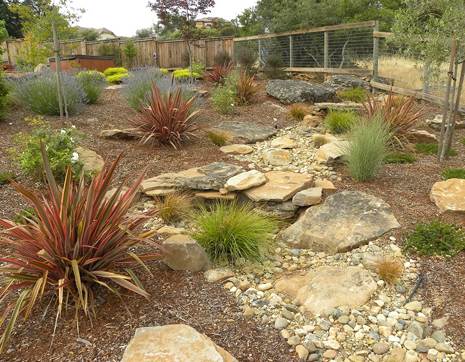

Video description
Several ready-made dry stream ideas in the video:
Certain forces will require care associated with the change of seasons. At the beginning of spring, it is useful to loosen and fertilize the soil around the stream, then the greenery will actively grow throughout the warm period. At the end of summer, you will have to clean the stream from dry foliage, in winter to insulate plantings that are afraid of frost.
This might be interesting!
In the article at the following link, read about the top 10 Art Nouveau staircases: complex in simple.
Dry stream materials
You should select the material from which the trickle will be created. It can be stones, pebbles, sand. Stones come in a variety of sizes, shapes and colors. With their help, you can maintain the color of the house and the garden itself. It is recommended to use stones of different sizes for the stream. The bottom of the stream is poured out with medium-sized stones, and the closer to the middle, the stones are used less and less in size. The space between them can be filled with sand. At the beginning of the source, it is recommended to use stones of larger sizes: they are placed in a chaotic manner along the edges of the stream, in particular on its bends, creating certain compositions with planted plants.


A stream can have a spectacular start. For example, flowing out of a “mountain” - it can be a mound of stones. You can also get a very interesting picture if the trickle starts from a group of trees. If we compare this with nature, it is as if a spring is gushing somewhere in the forest, towering over the moss-covered pebbles.
Necessary care
Any element of landscape design requires maintenance. The stone stream is no exception. To maintain an attractive appearance, some work needs to be done. They are as follows.
- Important avoid excessive dryness of the soil
all over the man-made stream. The accumulation of stones forms a special microclimate, so that plants can live comfortably in it, it is necessary to water the stream with water.
- To prevent a new element of the landscape from being covered a blanket of weeds
, it is necessary to periodically pull out weeds, release plantings from dry grass, from faded buds. It is important to regulate the height of the planted plants, try to prevent their strong growth.
- Experts recommend watch out for insects
, do not allow ants to build their houses under the stones. They are the most common artificial landscape problem. Insects gradually destroy man-made objects. They prefer to equip their homes under large boulders, so they need to be raised and inspected systematically. If you do not do this, very soon islands of loose sand will appear in the stream from the stone.
Plants for a dry stream
Plants for a dry stream can be selected for every taste and color, since, unlike a real reservoir, it is not limited only to aquatic plants. The indisputable advantage of a dry stream: seedlings are also not limited to size and height. Whiter trees, shrubs can be used as a background, tall perennials are also planted in the background. Do not be afraid to use large plants, because the composition looks more attractive when it has a skeleton.
What plants can be used for landscaping a dry stream:
- Ground cover plants. When landscaping a dry stream, you cannot do without ground cover plants, smoothly spreading over the stones and between them. There are a lot of options depending on flowering, height and type of foliage: bryozoan, obrietta, rejuvenated, sedum, seduya, subulate phlox, creeping thyme, creeping tenacious, loosestrife, periwinkle, herbal carnation, alpine antennae, arabis, highlander, iberis aubrietta, armeria, malnyanka and many others.
- Perennial flowers. Varieties of irises: bearded, Siberian, Japanese, marsh and other types of irises; daylilies, peonies, sage, lavender, dwarf Gaillardia, karyopsis, yasnotka, geranium, basil, various types of bells, heuchera, hosta, veronica, cornflowers, buzulnik, aster, astilba, armeria, garden tradiscantia, wormwood Nvejana, edta aquilegia, acconite, delphinium, fern, dicentra, gravilat, helenium, burnet, thistle, purse.


- Cereals look very stylish: Chinese miscanthus, giant, sugar-colored; gray fescue; maned barley; ryegrass; meadow man; falaris; palm-leaved sedge; lagurus (haretail); sesleria; lightning; reed grass; pike; calamus and others.
- Shrubs: various types of spiraeus, forsythia, hydrangea, cinquefoil, weigela, broom, Japanese quince, lilac, roses from ground cover to bush forms, barberry, scumpia, caragana, almond, willow, chubushnik, elderberry, rhododendron, maple, heather Japanese (a small tree that creates a Japanese-style motif looks gorgeous on the bank of a dry stream). When planting them, be sure to take into account that the foliage will fall off in the fall.
When planting conifers, you must definitely remember that they will create a composition not only in the summer, but will also decorate the landscape all year round. In the background, you can plant small conifers from two to three and a half meters, for example:
- prickly spruce 'Bialobok', prickly spruce 'Glauca globosa', prickly spruce 'Glauca peydula', prickly spruce 'Luky strike', prickly spruce 'Maigold', prickly spruce 'Montgomery'; European spruce 'Acrocona', European spruce 'Frohburg'; gray spruce ‘alberta blue’, gray spruce ‘F.G.Daisy’s white’; pea cypress ‘Filifera’; European larch ‘Puli’, European larch ‘Repens’; balsam fir 'Brevifolia'; subalpine fir 'Compacta'; 'Smidtii' Geldrech pine; Chinese 'Spartan' juniper, 'Stricta' Chinese juniper, 'Arnold' juniper, 'Hibernica' juniper, 'Meyer' juniper, 'Sentinel' juniper, 'Suecica' juniper, and Suecica.
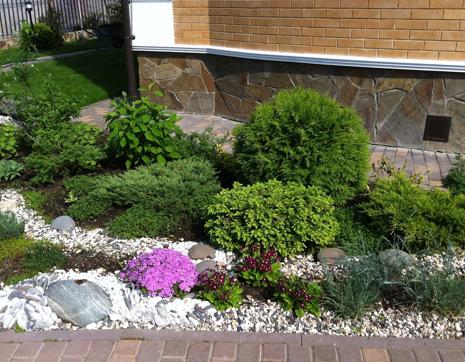

The foreground can be decorated with undersized species.These are different varieties of junipers; undersized spruce: prickly spruce 'Procumbens', prickly spruce' Waldbrunn ', European spruce' Echiniformis', European spruce 'Formanek', European spruce 'Little Gem', European spruce 'Procumbbens', European spruce' Pumila ', European spruce' Pumila Glauca ', European spruce' Pumila Nigra ', European spruce' Pusch ', European spruce' Repens', gray spruce 'Alberta Globe', gray spruce 'Blue Planet', gray spruce 'Echiniformis', black spruce' Nana '; cross-pair microbiota ‘Goldspot’, cross-pair microbiota ‘Gakobsen’; balsam fir 'Nana', balsam fir 'Blauer Eskimo', balsam fir 'Blue Emperor', balsam fir 'Brilliant', balsam fir 'Cis', balsam fir 'Green Carpet', balsam fir 'Kohout's lcebreaker', balsam fir 'Kohout's lcebreaker' ', balsam fir' Taiga ', balsam fir' Tundra '; one-color fir 'Compacta', one-color fir 'Piggelmee'; subalpine fir 'Green Globe'; 'Schoodic' bank pine; Weymouth pine ‘Blue Shag’, Weymouth pine ‘Macopin’, Weymouth pine ‘Minima’, Weymouth pine ‘Tiny Kurls’; Mountain pine pine, Mountain pumilio sleepy.
Dry Stream Decorations
We must not forget about small architectural forms. They will help complement the composition, as well as give a certain mood to the site. A dry stream can be decorated with various figurines, their choice is now not limited and there is an opportunity to choose the one suitable for every taste and color: flowerpots, antique amphorae, chamotte clay pots.
If a dry stream must pass through the path, then it is worth thinking about the bridge. It can be made of various materials, flat or convex, depending on the style of your site.
A very interesting option is the use of old broken vases and pots in decorating a stream. They are laid out in several levels, sprinkling with soil, carefully tamped and planted with plants. This creates a graceful cascade shape. For this option, you need to choose the most frost-resistant plants, for example, mosses. Some perennials will have to be covered for the winter.
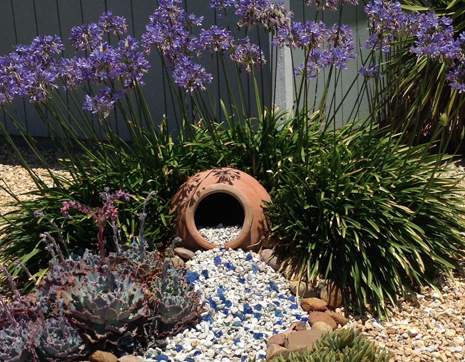

Pond with a bridge
Only natural wood is suitable for the construction of a bridge over a stream. If there is an unused log in the yard - that's what you need.
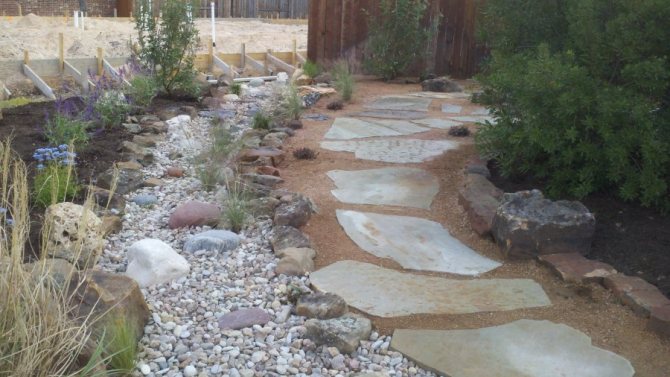

I do not like this option, you can make the crossing with your own hands. Or you can leave it as it is and spread the stones on the surface.
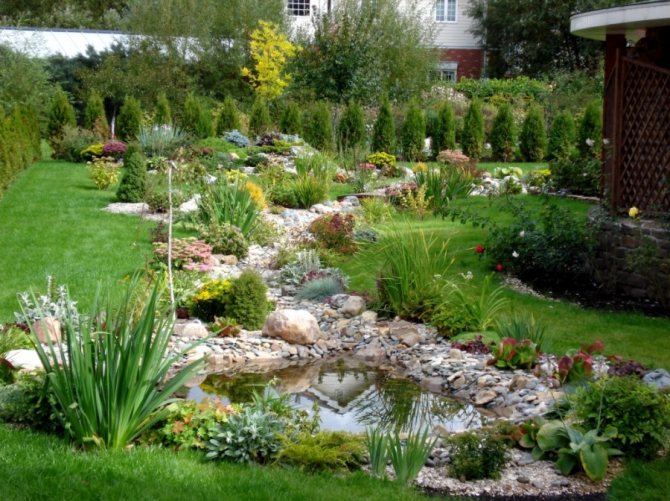

Dry Stream Lighting
Lighting is another not unimportant part of the implementation of the idea. The right light creates a cozy atmosphere on the site, with its help you can highlight the most interesting details of the garden, unusual shapes of a stone or plant. He will not only support the overall color of the garden, but also set the "flow" of a dry stream.
If the style of the site is made in the Japanese style, then you can decorate the dry stream with Japanese lanterns. With their help, your composition will look much more interesting.


A dry stream can be both small and large, have straight or winding shapes, surrounded by a large number of plants or only two or three seedlings. The most important advantage of the stream is that there are no limitations in imagination.
Adhering to the above rules, you can make a dry stream yourself. To do this, you need to figure out the technology of creation, choose the right style of the stream so that it does not get out of the general direction of the garden, think over which plants will decorate the composition all year round and much more. If you do not have time to study the information and you want to create a dry stream, reducing costs and minimizing errors, our specialists will be happy to help you. Experience, knowledge and professional qualities will allow us to easily create a "stone oasis" on any site that will delight you with its decorative effect for many years.


Digging moment
You can safely dig, just remember right away that the walls of the recess should be at an angle of no more than 50 degrees.When digging, discard weeds, preferably along with the roots.

